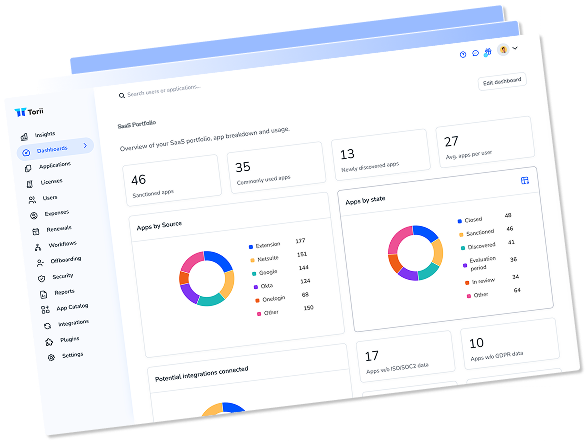The great resignation, reshuffle, reset, reconfiguration—call it what you want—people are leaving their jobs in record-breaking numbers. If your business is on the losing side of that reckoning, it’s costly in all senses of the word.
So why are people leaving? There are obvious reasons: better pay, flexible work options, competitive benefits, or a more inclusive culture. But employers could be overlooking a significant factor underpinning positive employee experiences, one that could benefit and preserve the employee-employer relationship long before it sours—efficient, engaging onboarding.
The Not-So-Hidden Effects of Poor Onboarding
During the interview process, candidates hear all about a company’s unique, inclusive culture, limitless growth opportunities, and innovative projects. However, once new hires sign the dotted line, they are often insulated from those perks until they’ve gone through onboarding. And for the most part, that process is a slog that immediately undermines an employee’s experience with the company.
Gallup reports, “nearly one in five employees either report that their most recent onboarding was poor—or that they received no onboarding at all.” If a company has no actual onboarding process in place, it often leaves new employees with nothing to do but wait between periodic meetings and instructions. As a result, your once eager new hire may suddenly feel lost, disengaged, undervalued, and questioning if they made the right choice.
Let’s examine some of the ways poor onboarding plays out and why it drives employees away.
Disengaged On Day One: Paperwork Pitfalls and Tech Bottlenecks
Nothing quite takes the wind out of a new hire’s sails like monotonous, mindless paperwork, and for many organizations, it takes up a solid portion of their first couple of days in their new role. The Society for Human Resource Management (SHRM) found that nearly 40% of onboarding activities consist of completing paperwork such as benefits forms and compliance documents.
On top of paperwork, new hires and IT teams burn out on repetitive configuration tasks for their tools and apps. Depending on the process, new employees might be mindlessly copying and pasting credentials into dozens of applications (most of which they’ll never use). Or, they’re left twiddling their thumbs waiting for IT to provide credentials.
Considering that SaaS applications are the digital headquarters for work in our new normal, especially for remote workers, new hires need these tools locked and loaded the moment they log in on their first day.
Rather than building these administrative and IT tasks into the onboarding process, they should be completed before a new employee’s first day (as much as possible). That way new employees and their managers can focus on the important stuff—meet-and-greets with their peers, role-specific training sessions, one-on-one meetings with leadership, and organizational culture.
The Upsides of Proper Onboarding
Left without proper resources, camaraderie, and guidance, new hires may have one foot out the door before they even really start. On the other hand, Gartner found that a “successful” onboarding process can:
- Increase employees’ discretionary effort by more than 20%
- Drive employee performance by up to 15%
- Increase employee retention—Committed employees work 57% harder and are nine times less likely to leave
Implementing a full blown onboarding program takes a lot of planning, testing, and learning, but there are three key steps organizations can take to improve their current employee onboarding experience.
Step 1: Organize Your Apps and Internal Resources
Your organization has hundreds of applications, but not all of them are necessary for your new hire. That’s why it’s best practice for IT to collaborate with department heads to create a “standard” list of applications for each department. Managers may also point out optional apps or apps that employees can choose between depending on their preference.
Even better, SaaS management platforms like Torii let IT teams create a unified, actionable application catalog that gives everyone visibility to the full scope of your SaaS stack and details that answer the questions:
- Who owns this application?
- What are we using it for?
- Who should be using this application, and who shouldn’t?
Beyond applications, organizations should do all they can to empower a new hire’s learning journey. That means providing clear and accessible documentation for:
- Business values
- Standard operating procedures (SOPs)
- Lists of available resources
- Role expectations
- And anything else they’ll need to be successful
All of this helps the new hire to hit the ground running and contribute right away.
Step 2: Automate Onboarding Processes When Possible
There will inevitably be some paperwork and administrative formalities that new hires have to go through, but these tasks shouldn’t be the focus of onboarding. A successful employee onboarding process ensures your new hire has all the tools and resources they need to become a productive (and happy) employee.
With the right tools, businesses can automate some of the manual, time-consuming, and outright tedious onboarding process steps, like tech setup. For example, with a SaaS management platform like Torii, IT administrators can accelerate application access by implementing an onboarding workflow that automatically provisions applications for new hires based on their role. With this workflow in place, IT saves hours traditionally spent on manually provisioning applications, and your new hire gains instant access to the tools they need.
Step 3: Focus on Building Emotional Connections Above All Else
Remember when you were a kid, being dropped off for the first day at a new school? Were you anxious, excited, or both? Were you worried about fitting in and liking your classmates? Starting the first day at a new job isn’t that different.
Paperwork, application configuration, and dull duties should be a blip in the onboarding experience. Instead, the focus should be on getting to know the new hire. What is their learning style? Do they appreciate public praise, or would they prefer getting positive feedback in a one-on-one setting? What are their interests outside of work?
When employers prioritize elements of onboarding that make a new hire feel an immediate sense of belonging and support, employees are more likely to stay long-term.
Perfect Your Onboarding Process
Don’t just attract star employees; retain them.
Learn more about how Torii improves your onboarding and offboarding process.

